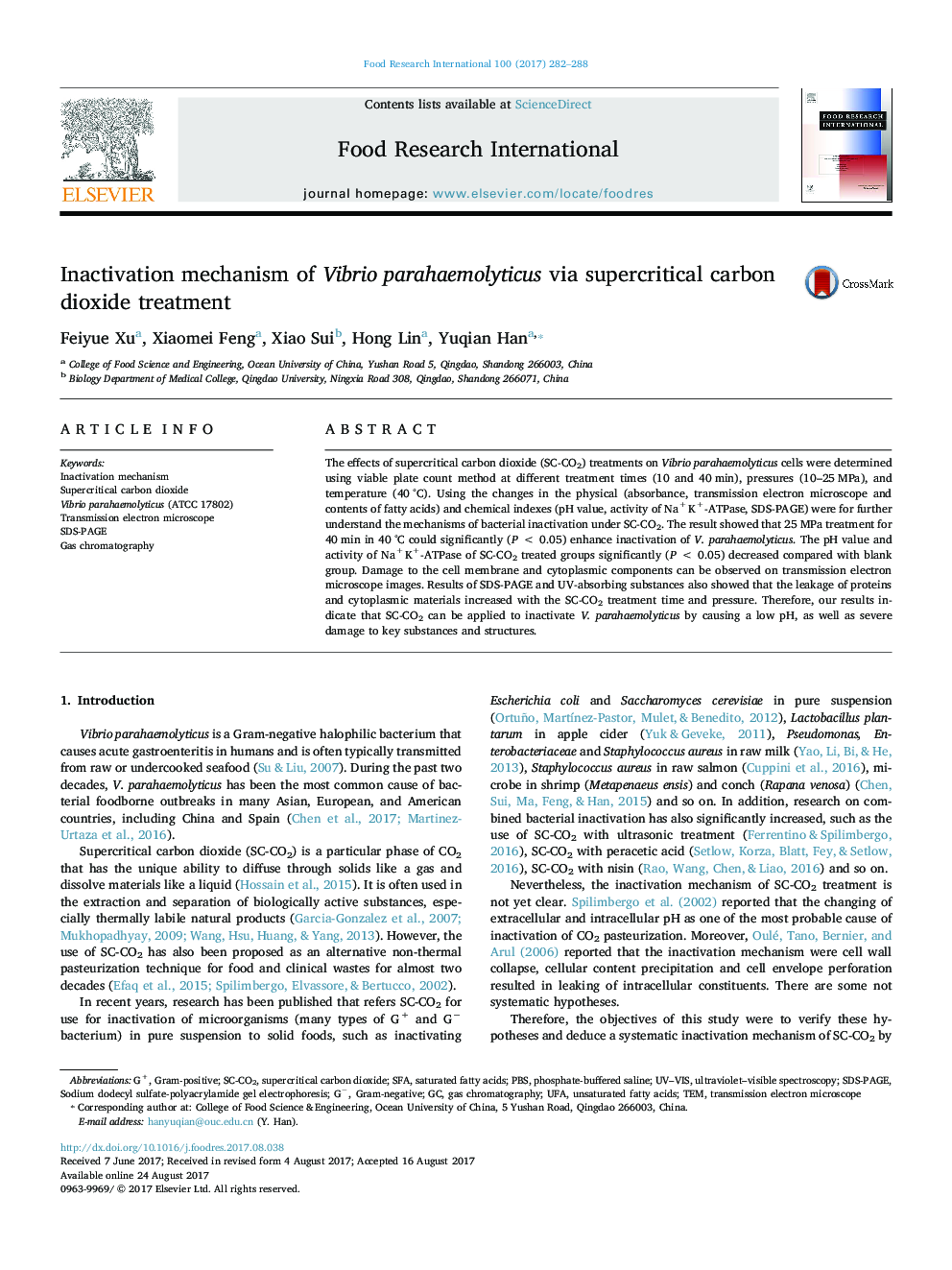| Article ID | Journal | Published Year | Pages | File Type |
|---|---|---|---|---|
| 5767853 | Food Research International | 2017 | 7 Pages |
â¢Vibrio parahaemolyticus was treated at different conditions of supercritical CO2.â¢Exploring inactivation mechanism combined with the changes in the physical and chemical indexes.â¢Severe damage to key substances and structures is considered to be the inactivation factor.
The effects of supercritical carbon dioxide (SC-CO2) treatments on Vibrio parahaemolyticus cells were determined using viable plate count method at different treatment times (10 and 40 min), pressures (10-25 MPa), and temperature (40 °C). Using the changes in the physical (absorbance, transmission electron microscope and contents of fatty acids) and chemical indexes (pH value, activity of Na+ K+-ATPase, SDS-PAGE) were for further understand the mechanisms of bacterial inactivation under SC-CO2. The result showed that 25 MPa treatment for 40 min in 40 °C could significantly (P < 0.05) enhance inactivation of V. parahaemolyticus. The pH value and activity of Na+ K+-ATPase of SC-CO2 treated groups significantly (P < 0.05) decreased compared with blank group. Damage to the cell membrane and cytoplasmic components can be observed on transmission electron microscope images. Results of SDS-PAGE and UV-absorbing substances also showed that the leakage of proteins and cytoplasmic materials increased with the SC-CO2 treatment time and pressure. Therefore, our results indicate that SC-CO2 can be applied to inactivate V. parahaemolyticus by causing a low pH, as well as severe damage to key substances and structures.
Graphical abstractDownload high-res image (273KB)Download full-size image
